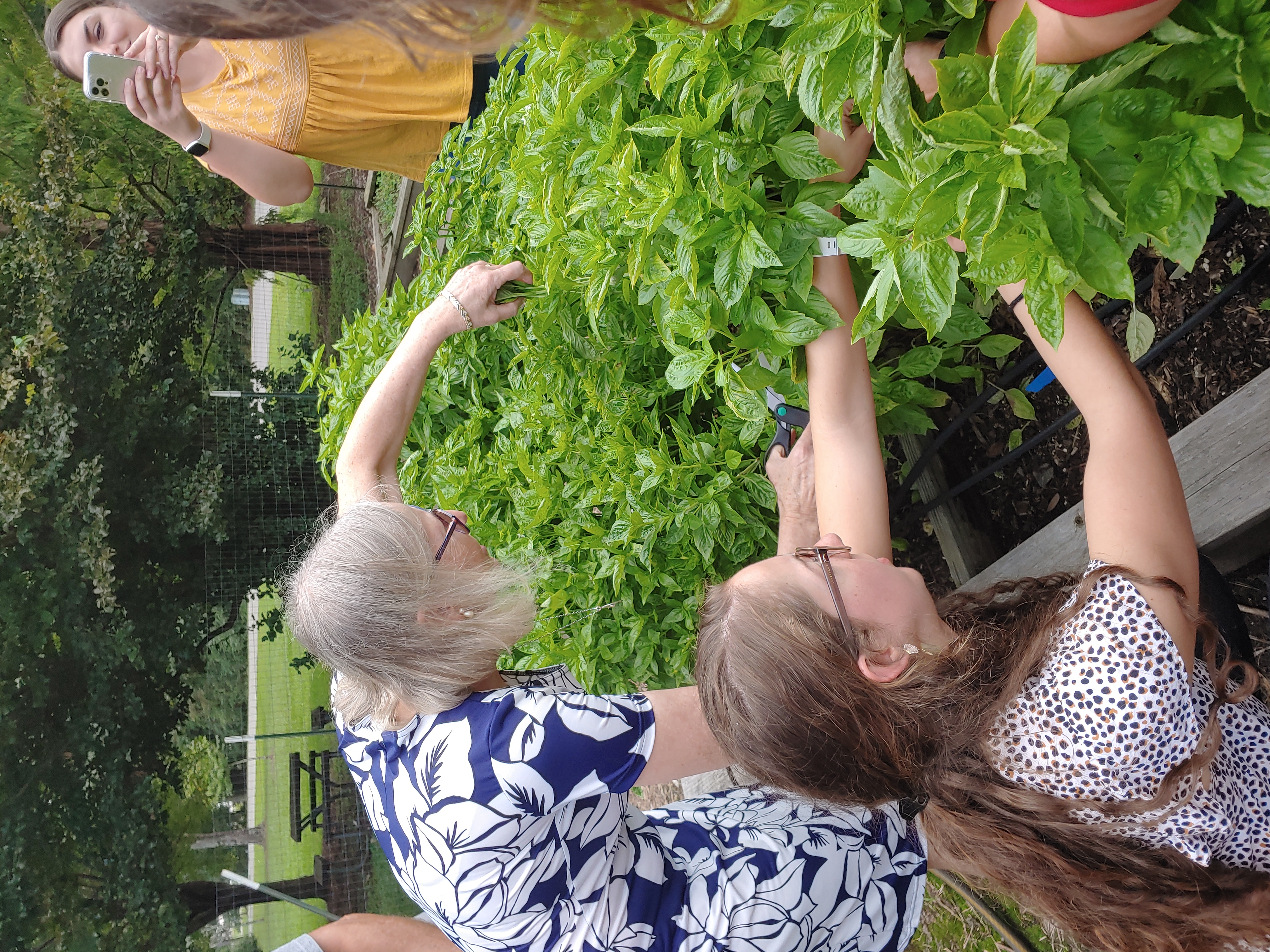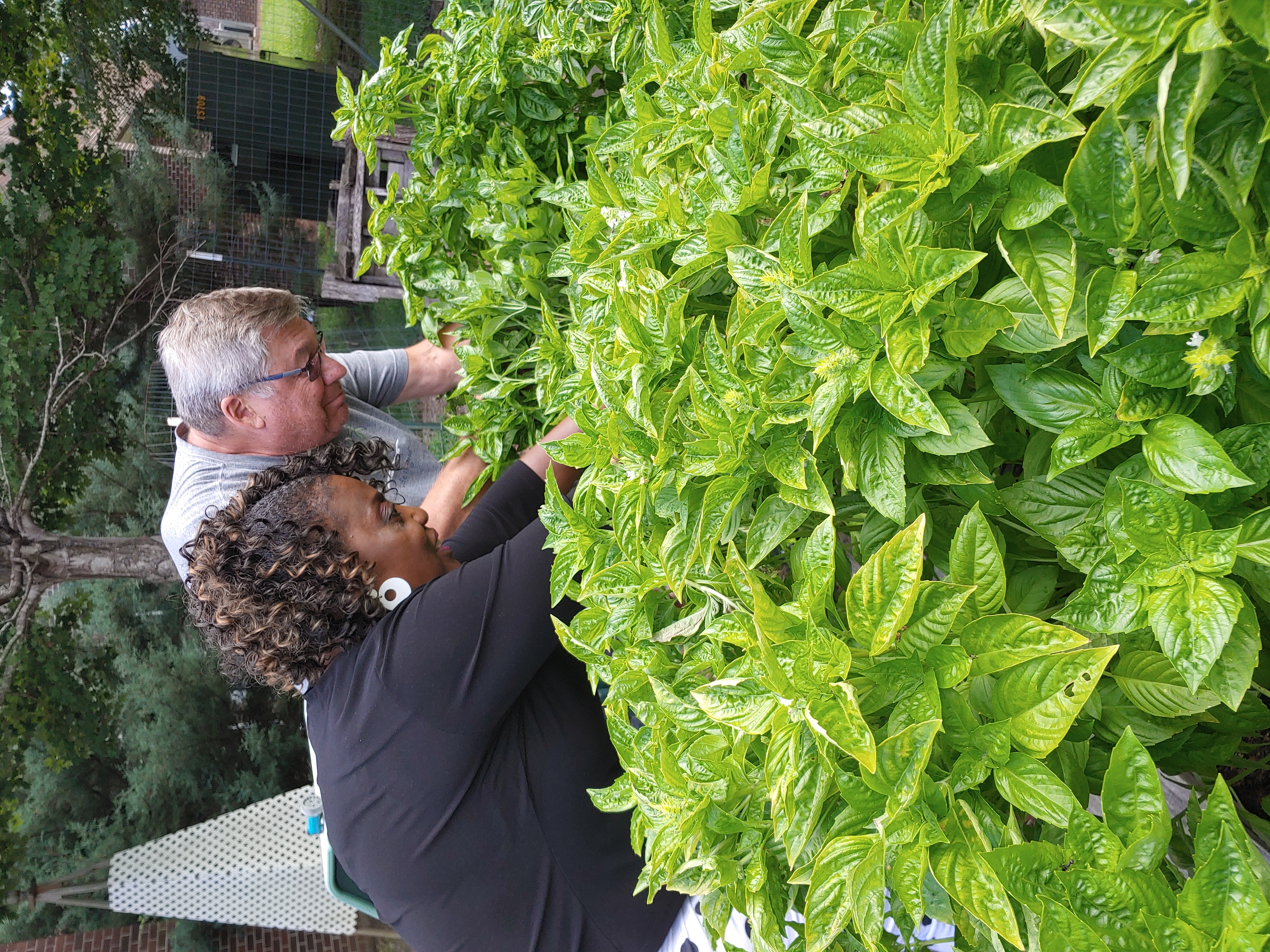Extension Master Food Volunteers Pesto Taste Test
go.ncsu.edu/readext?885583
en Español / em Português
El inglés es el idioma de control de esta página. En la medida en que haya algún conflicto entre la traducción al inglés y la traducción, el inglés prevalece.
Al hacer clic en el enlace de traducción se activa un servicio de traducción gratuito para convertir la página al español. Al igual que con cualquier traducción por Internet, la conversión no es sensible al contexto y puede que no traduzca el texto en su significado original. NC State Extension no garantiza la exactitud del texto traducido. Por favor, tenga en cuenta que algunas aplicaciones y/o servicios pueden no funcionar como se espera cuando se traducen.
Português
Inglês é o idioma de controle desta página. Na medida que haja algum conflito entre o texto original em Inglês e a tradução, o Inglês prevalece.
Ao clicar no link de tradução, um serviço gratuito de tradução será ativado para converter a página para o Português. Como em qualquer tradução pela internet, a conversão não é sensivel ao contexto e pode não ocorrer a tradução para o significado orginal. O serviço de Extensão da Carolina do Norte (NC State Extension) não garante a exatidão do texto traduzido. Por favor, observe que algumas funções ou serviços podem não funcionar como esperado após a tradução.
English
English is the controlling language of this page. To the extent there is any conflict between the English text and the translation, English controls.
Clicking on the translation link activates a free translation service to convert the page to Spanish. As with any Internet translation, the conversion is not context-sensitive and may not translate the text to its original meaning. NC State Extension does not guarantee the accuracy of the translated text. Please note that some applications and/or services may not function as expected when translated.
Collapse ▲Our Extension Master Food Volunteers (EMFV) recently explored the different tastes of basil. The EMFV partnered with the Extension Master Gardener℠ Volunteers to evaluate several basil cultivars at the Extension Demonstration Kitchen in Bolivia.
This was part of an on-going research project being conducted by the Extension Master Gardener℠ Volunteers, North Carolina State University and N.C. Cooperative Extension Consumer Horticulture Agents. The Extension Master Gardener℠ Volunteers planted a test plot of basil this past June. This plot contains six different cultivars. One of the varieties is the classic Genovese basil and the others are experimental.

EMFV Maria Knapik and Rachel Bland, Family and Consumer Science Extension Agent cutting basil from the test plot.
Basil tends to be susceptible to Basil Downy Mildew. One of the goals of this study is to assess the resistance of these cultivars to this mildew. So far, zero Basil Downy Mildew has been found on the Brunswick County plot.
Additionally, each cultivar is being evaluated for aroma, taste and appearance. It has been tested alone, with a traditional Caprese Salad (with tomatoes and mozzarella) and now the EMFV have made it into a classic pesto.
While the cultivars had similarities to each other, there were also some distinct differences. The size and shapes of the leaves varied. Some had more aroma. Others had very observable flavor differences. The appearance, aroma and flavor were ranked using a scale of “undesirable”, “somewhat desirable” and “most desirable”. It was interesting to see how differently each individual rated these characteristics. The research results won’t be available until later this fall.
The EMFV carefully picked the basil assuring that they kept the cultivars separate. They also used the same recipe to insure consistency. Traditionally, pesto is made with pine nuts, but they can be pricey. The recipe used for the taste testing contained walnuts instead. When making pesto, you can substitute other nuts such as cashews, almonds, pecans or pine nuts as you like or have on hand.
Basil is the basic ingredient in this pesto, but other herbs or leafy greens such parsley, kale or spinach could be substituted for all or part of the basil. I like to always include some basil to get that distinct flavor when I make pesto, but it is not necessary.
Basil Walnut Pesto
½ cup olive oil (divided, plus more if needed)
4 cups fresh basil leaves, packed
2 garlic cloves, minced
½ cup parmesan cheese, shredded
½ cup unsalted walnuts
1 lemon, juiced (or 3 Tablespoons bottled lemon juice)
Zest from one lemon (optional)
Salt and pepper to taste
- Wash hands and disinfect surfaces before beginning. In a blender or food processor, add half the basil leaves and ¼ cup of olive oil. Blend until finely chopped.
- Add the other half of the basil leaves and continue to blend. Add the remaining olive oil as needed, until all the basil has been blended.
- Add the nuts, garlic, lemon juice, lemon zest, salt and pepper and blend until smooth.
- Add the parmesan cheese and blend again until a coarse sauce is achieved. Taste and add any additional lemon juice or salt and pepper, if desired.
- Blend one last time until all ingredients are well combined. Store in an air-tight container for up to four days.
The pesto was evaluated alone and with pita chips. It could be used on sandwiches, pasta, pizza, vegetables or as a sauce for fish or chicken.

EMFVs Paul Reinmann, Lori Van Horn, Jane Kulesza and Extension Agent Meghan Lassiter (left to right) evaluating the six cultivars of basil.
The Extension Master Food Volunteers (EMFV) work with the Family and Consumer Science Extension staff to conduct educational programs in the area of food, nutrition and food safety. There are currently nine EMFV that volunteer for N.C. Cooperative Extension in both Brunswick and New Hanover counties. For information on becoming an EMFV contact Megan Lassiter at the N.C. Cooperative Extension in Brunswick County.
A special thank you to Extension Master GardenerSM Volunteers Robin Murray and Steve Anderman and Krystyna Ochota, Consumer Horticulture Program Assistant and Master Gardener Coordinator for Brunswick County for their assistance with this taste testing.
Syracuse is a Family and Consumer Science team member and can be reached at N.C. Cooperative Extension, Brunswick County Center 910-253-2610




